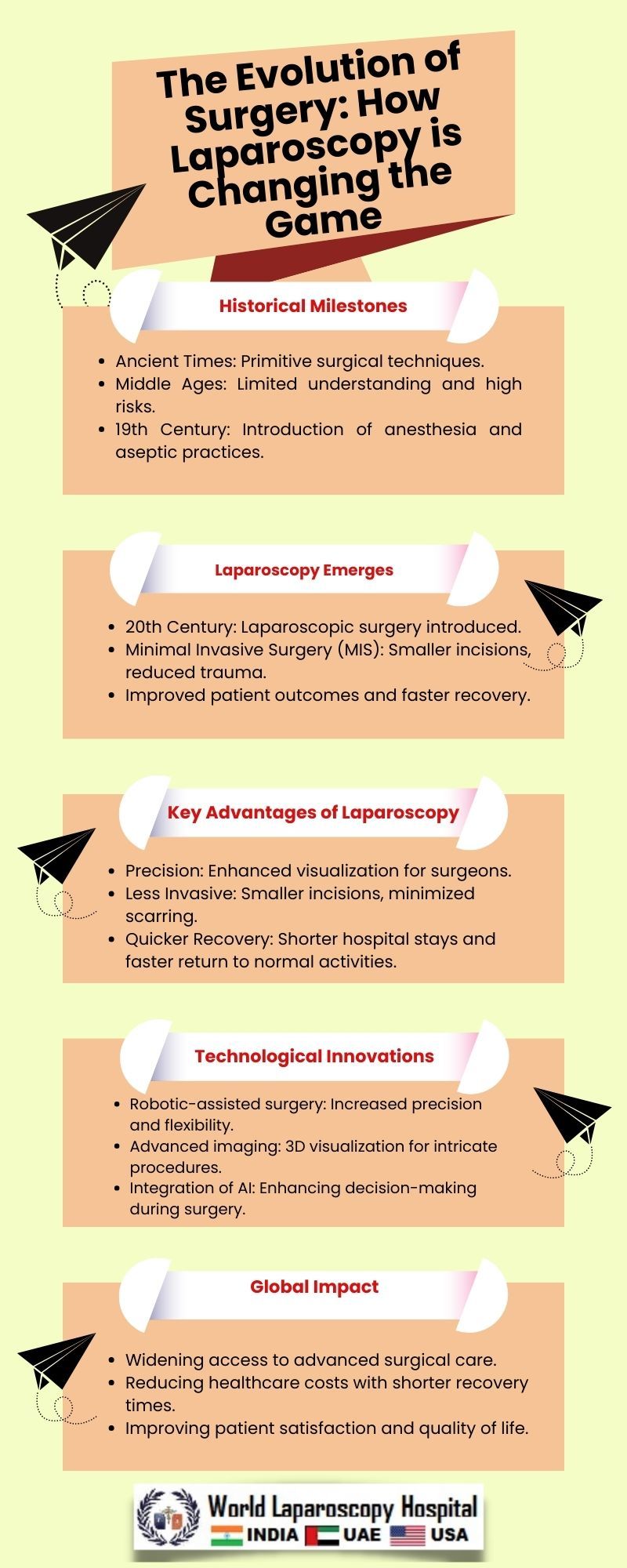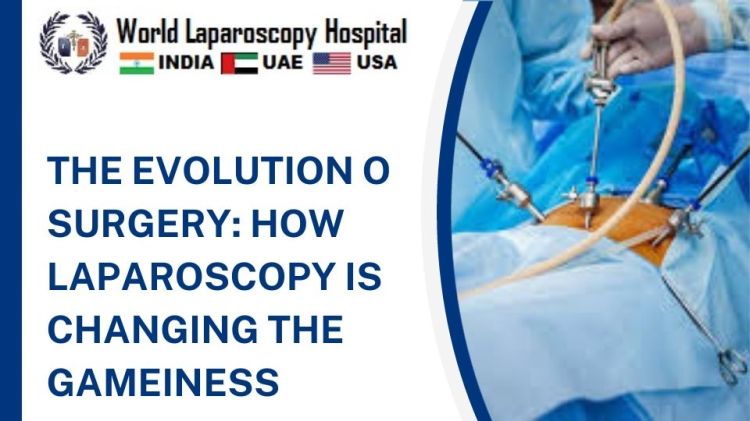Introduction:
In the vast landscape of medical innovation, few advancements have had as profound an impact on surgery as the evolution of laparoscopy. This transformative technique has not only changed the way surgeries are performed but has also redefined patient experiences, recovery times, and overall outcomes. In this comprehensive exploration, we delve into the origins, mechanics, and far-reaching implications of laparoscopy, shedding light on how it is revolutionizing the field of surgery.

The Genesis of Laparoscopy:
Historical Perspective:
- Early attempts at minimally invasive surgery.
- The pioneering work of George Kelling and Hans Christian Jacobaeus.
- Initial challenges and skepticism within the medical community.
Technological Milestones:
- Development of specialized instruments.
- Introduction of fiber-optic technology.
- Evolution of video laparoscopy.
Understanding Laparoscopic Surgery:
Mechanics and Techniques:
- Small incisions and trocar placement.
- Role of pneumoperitoneum in creating a surgical workspace.
- Utilization of a laparoscope for visualization.
Versatility in Specialties:
- Gynecological laparoscopy.
- Laparoscopic procedures in urology.
- Advancements in laparoscopic colorectal surgery.
- The expanding role in bariatric surgery.
Advantages Over Traditional Surgery:
Reduced Trauma:
- Minimizing tissue damage.
- Lesser postoperative pain.
- Limited scarring and improved cosmetic outcomes.
Quicker Recovery Times:
- Shortened hospital stays.
- Faster return to normal activities.
- Enhanced patient satisfaction.
Lower Complication Rates:
- Decreased risk of infection.
- Reduced blood loss during surgery.
- Lower incidence of hernias and wound complications.
Challenges and Limitations:
Learning Curve:
- Training surgeons in laparoscopic techniques.
- Overcoming the initial difficulties in hand-eye coordination.
Equipment Costs:
- Initial investment in specialized instruments.
- Balancing cost-effectiveness with long-term benefits.
Patient Selection:
- Identifying cases suitable for laparoscopy.
- Navigating anatomical complexities.
Future Trends and Innovations:
Robotics in Laparoscopy:
- Integration of robotic-assisted systems.
- Improved precision and dexterity.
Artificial Intelligence in Surgical Planning:
- Utilizing AI for preoperative assessment.
- Enhancing decision-making during surgery.
Personalized Medicine in Surgery:
- Tailoring laparoscopic approaches based on patient characteristics.
- The role of genetic factors in surgical outcomes.
Societal Impact and Accessibility:
Global Reach:
- Expanding access to minimally invasive surgeries.
- Addressing healthcare disparities through laparoscopic interventions.
Economic Considerations:
- Cost-effectiveness of laparoscopic procedures.
- Impact on healthcare systems and insurance providers.
Patient Education and Empowerment:
- Enhancing understanding of laparoscopic options.
- Informed decision-making and patient advocacy.
Conclusion:
The evolution of surgery through laparoscopy represents a pivotal moment in medical history. From its humble beginnings to its current status as a cornerstone of modern surgical practice, laparoscopy continues to redefine the possibilities of minimally invasive interventions. As technology advances and the medical community embraces innovative approaches, the impact of laparoscopy is poised to grow, promising a future where surgeries are not only effective but also gentler and more patient-centric.
